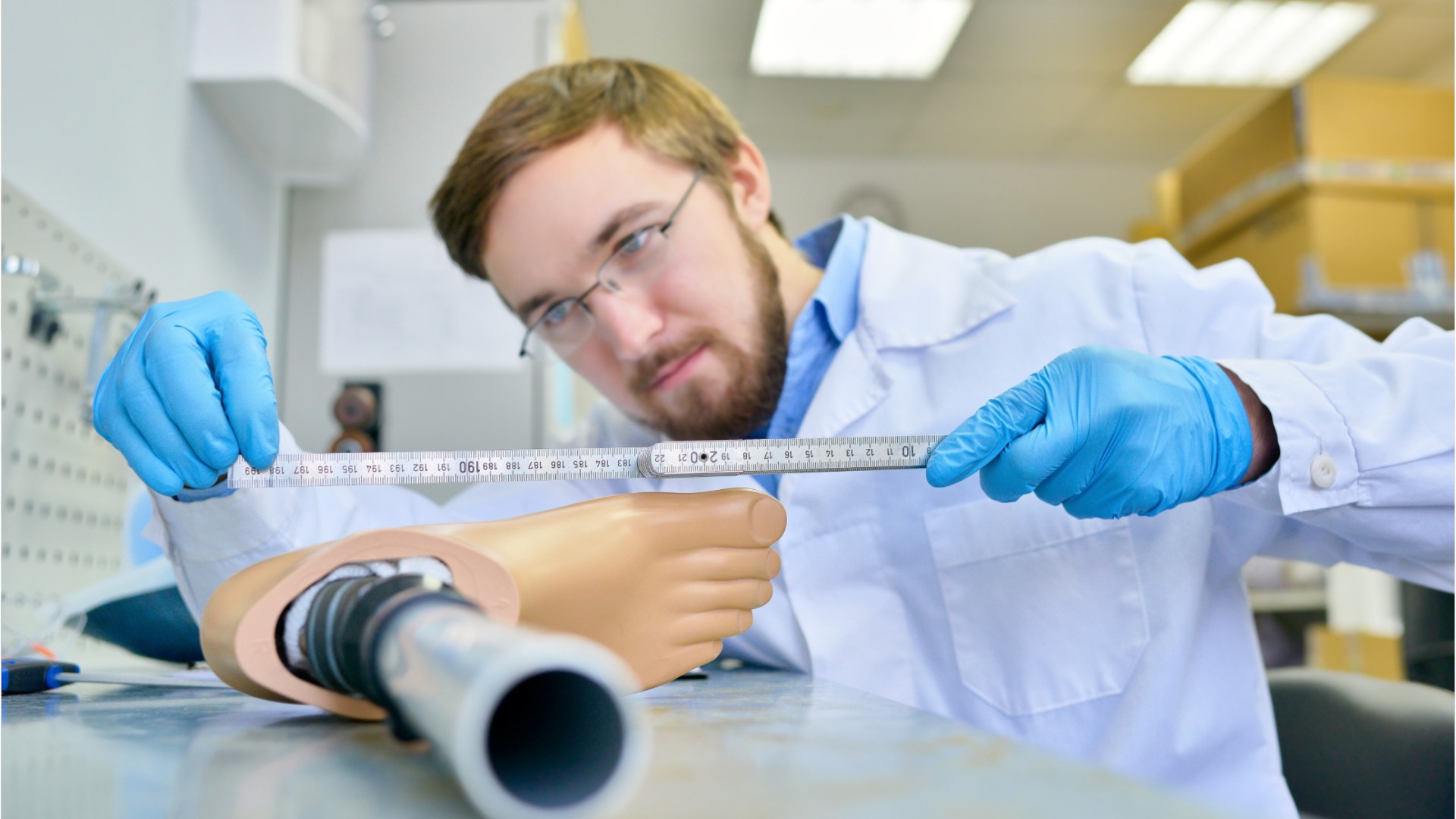Orthotists & Prosthetists
Certified Orthotist (CO), Certified Prosthetist (CP), Certified Prosthetist Orthotist (CPO), Orthotist
 Select a military branch to see samples.
Select a military branch to see samples.
Physical Medicine; Physical Medicine Apprentice; Physical Medicine Apprentice, Orthotic; Physical Medicine Craftsman; Physical Medicine Craftsman, Orthotic; Physical Medicine Helper; Physical Medicine Helper, Orthotic; Physical Medicine Journeyman; Physical Medicine Journeyman, Orthotic; Physical Medicine Manager
Medical Service Corps Officer; Orthopedic Specialist; Orthopedic Surgeon; Podiatry
No similar titles were found.
No similar titles were found.
Occupational Therapy Assistant; Orthopedic Cast Room Technician; Orthopedic Technician
Physical Medicine; Physical Medicine Apprentice, Orthotic; Physical Medicine Craftsman, Orthotic; Physical Medicine Helper, Orthotic; Physical Medicine Journeyman, Orthotic
What they do:
Design, measure, fit, and adapt orthopedic braces, appliances or prostheses, such as limbs or facial parts for patients with disabling conditions.
On the job, you would:
- Fit, test, and evaluate devices on patients, and make adjustments for proper fit, function, and comfort.
- Instruct patients in the use and care of orthoses and prostheses.
- Maintain patients' records.
Knowledge
Business
- customer service
- management
Health
- medicine and dentistry
- therapy and counseling
Engineering and Technology
- design
- mechanical
Arts and Humanities
- English language
Skills
Basic Skills
- listening to others, not interrupting, and asking good questions
- reading work related information
Problem Solving
- noticing a problem and figuring out the best way to solve it
Social
- looking for ways to help people
- understanding people's reactions
Abilities
Verbal
- communicate by speaking
- listen and understand what people say
Ideas and Logic
- make general rules or come up with answers from lots of detailed information
- notice when problems happen
Hand and Finger Use
- hold or move items with your hands
- keep your arm or hand steady
Personality
People interested in this work like activities that include practical, hands-on problems and solutions.
They do well at jobs that need:
- Innovation
- Empathy
- Achievement Orientation
- Cooperation
- Cautiousness
- Integrity
Technology
You might use software like this on the job:
Computer aided design CAD software
- Autodesk AutoCAD
- Ohio Willow Wood OMEGA Tracer System
Presentation software
- Microsoft PowerPoint
Medical software
- Healthcare common procedure coding system HCPCS
- OPIE Practice Management Suite
Education
Education: (rated 5 of 5)
master's degree
usually needed
usually needed
Job Outlook
Bright
New job opportunities are very likely in the future.
Explore More
- Audiologists
- Medical Appliance Technicians
- Orthopedic Surgeons
- Physical Medicine & Rehabilitation Physicians
- Podiatrists
You might like a career in one of these industries:
See more details at O*NET OnLine about Orthotists & Prosthetists.





